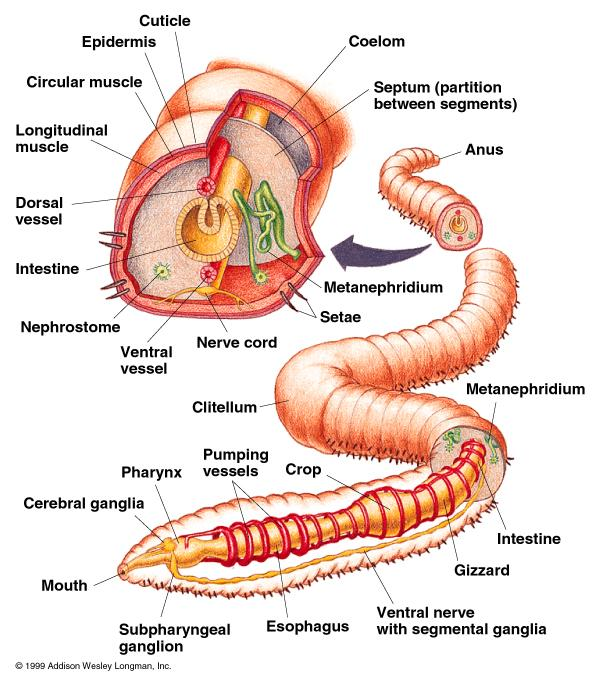
A nephridium of an earthworm drains materials directly from the
A. Gut
B. Coelom
C. Lymph
D. Blood
Answer
500.4k+ views
1 likes
Hint: The nephridia of earthworm are typically tubular in shape.
Each nephridium opens into the outer surface of the body by nephridiopore and the waste materials are discarded outside the body directly via these pores thus, they are also known as exonephric nephridia.
Complete answer: The earthworm is a tubular-shaped worm with a segmented body and it belongs to the phylum Annelida.
In this organism, most of the cells are not in direct contact with the surrounding environment. This is the reason for the requirement of a special excretory structure.
The excretory organs of the earthworm are called nephridia.
Nephridia are tubular structured and coiled tubes, which discards the nitrogenous wastes outside the body of the earthworm.
These structures are suspended within the body cavity (coelom).
Earthworms have two nephridia present nearly in each segment.
These nephridia play a crucial role in collecting the nitrogenous waste materials from each segment and transport it directly through the coelom to the soil through the anus.
Additional information: Earthworms and their relatives found anywhere there is moist soil and dead plant material.
Earthworms are more abundant in rain forest areas but can be found in many habitats on land and in freshwater.
All earthworm species require moist soil conditions to survive.
So, the correct answer is option B. Coelom.
Note: Except for the first two segments the nephridia are essentially present in all the remaining segments of the earthworm’s body wall. There is a total of two nephridia present in one segment.

Each nephridium opens into the outer surface of the body by nephridiopore and the waste materials are discarded outside the body directly via these pores thus, they are also known as exonephric nephridia.
Complete answer: The earthworm is a tubular-shaped worm with a segmented body and it belongs to the phylum Annelida.
In this organism, most of the cells are not in direct contact with the surrounding environment. This is the reason for the requirement of a special excretory structure.
The excretory organs of the earthworm are called nephridia.
Nephridia are tubular structured and coiled tubes, which discards the nitrogenous wastes outside the body of the earthworm.
These structures are suspended within the body cavity (coelom).
Earthworms have two nephridia present nearly in each segment.
These nephridia play a crucial role in collecting the nitrogenous waste materials from each segment and transport it directly through the coelom to the soil through the anus.
Additional information: Earthworms and their relatives found anywhere there is moist soil and dead plant material.
Earthworms are more abundant in rain forest areas but can be found in many habitats on land and in freshwater.
All earthworm species require moist soil conditions to survive.
So, the correct answer is option B. Coelom.
Note: Except for the first two segments the nephridia are essentially present in all the remaining segments of the earthworm’s body wall. There is a total of two nephridia present in one segment.

Latest Vedantu courses for you
Grade 8 | CBSE | SCHOOL | English
Vedantu 8 CBSE Pro Course - (2025-26)
School Full course for CBSE students
₹45,300 per year
Recently Updated Pages
Master Class 4 Maths: Engaging Questions & Answers for Success

Master Class 4 English: Engaging Questions & Answers for Success

Master Class 4 Science: Engaging Questions & Answers for Success

Class 4 Question and Answer - Your Ultimate Solutions Guide

Master Class 11 Economics: Engaging Questions & Answers for Success

Master Class 11 Business Studies: Engaging Questions & Answers for Success

Trending doubts
What is the difference between resemblance and sem class 12 social science CBSE

Draw ray diagrams each showing i myopic eye and ii class 12 physics CBSE

Why do the transition elements have higher enthalpies class 12 chemistry CBSE

What are the advantages of parallel combination over class 12 physics CBSE

What are the causes of overloading class 12 physics CBSE

There is hypertension due to smoking Give scientific class 12 biology CBSE




